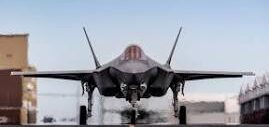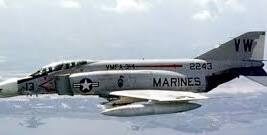Introduction
In the annals of aviation history, the United States has consistently been at the forefront of developing cutting-edge jet fighters, pushing the boundaries of technology and reshaping the landscape of modern air warfare. From the pioneering days of jet propulsion to the sophisticated stealth capabilities of the present, this article embarks on a comprehensive exploration of the best US jet fighters, tracing their evolution, contributions, and the technological marvels that have defined each era.
-
The Best US Jet Fighters Age Dawns: P-80 Shooting Star (1945)
The end of World War II marked the dawn of the jet age, and the P-80 Shooting Star emerged as the United States’ first operational jet fighter. Introduced in 1945, the Shooting Star showcased the potential of jet propulsion, laying the groundwork for future advancements. Its transition from propeller-driven aircraft represented a significant leap forward in speed and maneuverability, setting the stage for the jet fighters that would follow.

-
Korean War Icon: F-86 Sabre (1950s)
The F-86 Sabre, introduced during the Korean War, further solidified the United States’ commitment to air superiority. Engaging in intense dogfights with Soviet-built MiG-15s, the Sabre’s exceptional speed and agility demonstrated the superiority of American jet technology. Its success in combat not only marked a pivotal moment in aviation history but also established the F-86 as an iconic jet fighter of the 1950s.
-
Versatility Personified: F-4 Phantom II (1960s)
The 1960s saw the rise of the F-4 Phantom II, a jet fighter that would redefine versatility in military aviation. Originally designed as a fleet defense interceptor, the Phantom II evolved to become a multirole aircraft, excelling in air superiority, ground-attack, and reconnaissance missions. Its adaptability and widespread use in conflicts such as the Vietnam War underscored its significance and made it a mainstay in the US military for decades.
-
Cold War Legends: F-15 Eagle and F-16 Fighting Falcon (1970s-1980s)
The 1970s and 1980s marked a period of innovation with the introduction of two iconic jet fighters: the F-15 Eagle and the F-16 Fighting Falcon. The F-15, designed for air superiority, boasted unmatched speed, range, and advanced avionics. Complementing it, the F-16 Fighting Falcon, with its lightweight design and agility, became a staple in air forces around the world. These fighters not only defined American air dominance during the Cold War but also influenced future generations of aircraft.
-
Stealth Revolution: F-117 Nighthawk and F-22 Raptor (1980s-2000s)
The late 20th century witnessed a paradigm shift with the advent of stealth technology. The F-117 Nighthawk, the world’s first operational stealth aircraft, showcased the effectiveness of low-observable design during the Gulf War. Building on this legacy, the F-22 Raptor emerged as a fifth-generation marvel, combining stealth, speed, and advanced sensors to dominate the skies. The F-22’s unmatched air superiority capabilities solidified its place as one of the most advanced jet fighters in the world.
-
Multirole Mastery: F-35 Lightning II (2010s-Present)
In the 2010s, the F-35 Lightning II emerged as a testament to the evolution of multirole capability. Designed to excel in air-to-air combat, ground-attack, and reconnaissance missions, the F-35 represents the pinnacle of versatility. With three distinct variants catering to different operational needs, the F-35 has become a cornerstone of modern air forces, despite facing criticism for cost overruns and developmental challenges.
-
The Future Unveiled: Next-Generation Concepts (2020s and Beyond)
As the United States looks toward the future, the development of next-generation jet fighters is already underway. The Sixth-Generation Fighter program aims to push the boundaries of technology even further, incorporating advancements in artificial intelligence, unmanned systems, and hypersonic capabilities. These concepts are poised to redefine the capabilities of air dominance in an era of rapidly evolving threats.
Conclusion
The trajectory of US jet fighters reveals a fascinating journey of technological innovation, strategic adaptation, and unwavering commitment to air superiority. From the pioneering days of the P-80 Shooting Star to the cutting-edge capabilities of the F-35 Lightning II, each era has seen the United States consistently pushing the envelope to maintain its edge in aerial warfare.
As we reflect on the best US jet fighters in history, it becomes evident that these aircraft not only embody the spirit of American ingenuity but also serve as a testament to the evolving nature of warfare. The legacy of these exceptional jet fighters extends beyond their technological prowess; they symbolize the dedication of countless engineers, pilots, and military personnel who have contributed to shaping the future of aviation.
As the United States continues to invest in the development of next-generation jet fighters, the evolution of excellence in military aviation remains an ongoing saga. The best US jet fighters are not just relics of the past; they are beacons guiding the way to a future where air dominance continues to be a cornerstone of national security.





